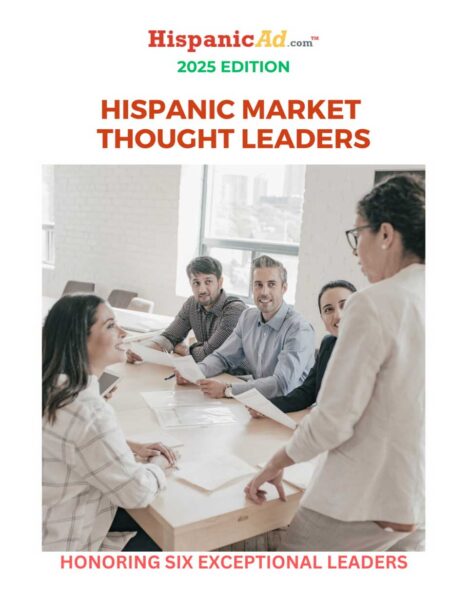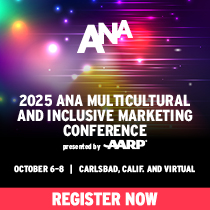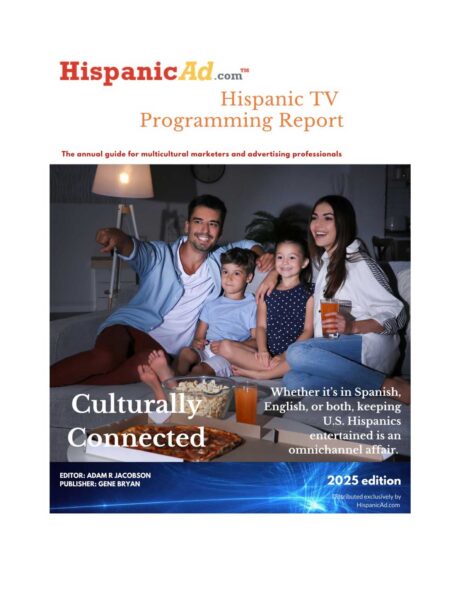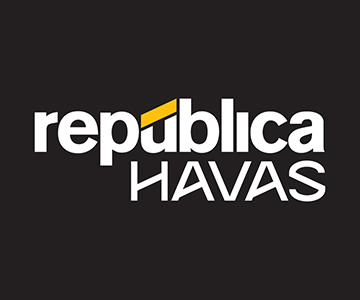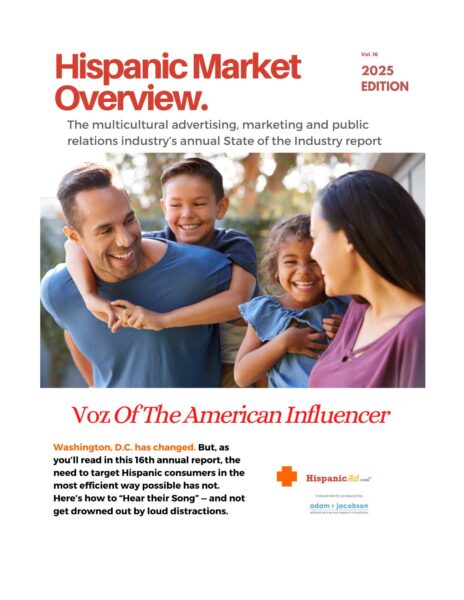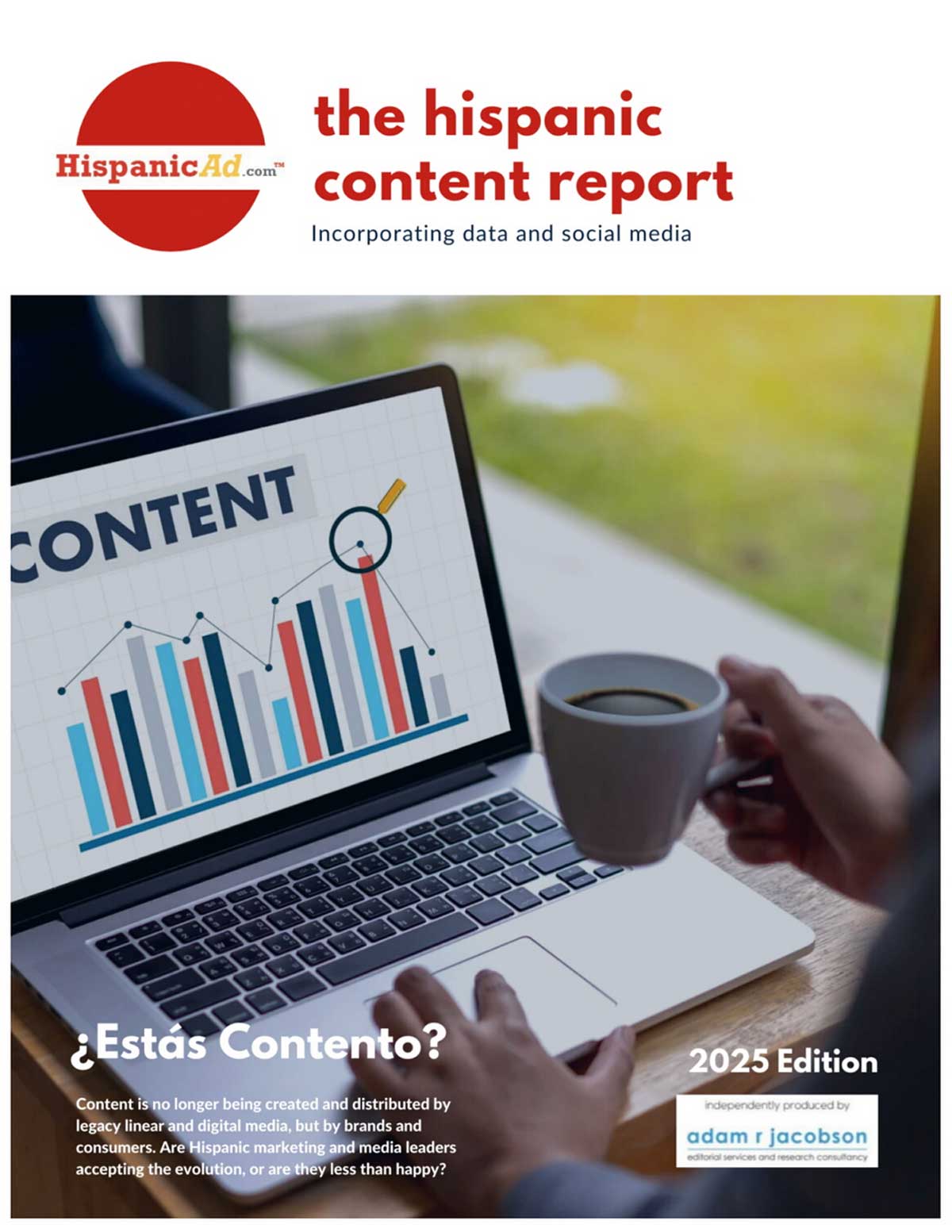CMO COUNCIL releases C-SUITE SCORECARD OF MARKETING EFFECTIVENESS
 While revenue and sales growth rank as management’s top mandate for marketers, CMOs will be more than happy with grades received in a new C-Suite Scorecard of marketing value and effectiveness released in a report by the Chief Marketing Officer (CMO) Council.
While revenue and sales growth rank as management’s top mandate for marketers, CMOs will be more than happy with grades received in a new C-Suite Scorecard of marketing value and effectiveness released in a report by the Chief Marketing Officer (CMO) Council.


 Brands are looking for more diversity and a different mindset from agencies post-pandemic
Brands are looking for more diversity and a different mindset from agencies post-pandemic As the economy recovers faster than expected globally (GDP +6%) and in most markets, so do marketing activity and advertising spending. With the added driver of rescheduled international sports events, MAGNA forecasts global all-media advertising spending to grow by $78bn (+14%) to $657bn in 2021, a new all-time high. MAGNA also raises its forecast for advertising market growth in 2022 to +6.6% (previously +5%). The +14% growth expectation for 2021 would represent the highest growth rate on record, beating +12.5% in 2000, and a significant increase from MAGNA’s previous global forecast (Dec. 2020: +8%).
As the economy recovers faster than expected globally (GDP +6%) and in most markets, so do marketing activity and advertising spending. With the added driver of rescheduled international sports events, MAGNA forecasts global all-media advertising spending to grow by $78bn (+14%) to $657bn in 2021, a new all-time high. MAGNA also raises its forecast for advertising market growth in 2022 to +6.6% (previously +5%). The +14% growth expectation for 2021 would represent the highest growth rate on record, beating +12.5% in 2000, and a significant increase from MAGNA’s previous global forecast (Dec. 2020: +8%). As we approach the midpoint of 2021, advertising growth for the year is far exceeding previous expectations, leading to a revision of our forecasts for this year and beyond. Excluding political spending, we now expect a 22% growth in media ad revenue during 2021, a marked improvement from our prior forecast.
As we approach the midpoint of 2021, advertising growth for the year is far exceeding previous expectations, leading to a revision of our forecasts for this year and beyond. Excluding political spending, we now expect a 22% growth in media ad revenue during 2021, a marked improvement from our prior forecast. According to a study by the Hispanic Marketing Council (HMC), 54 percent of Dads said, “I’m the boss in the family,” but only 5 percent of Moms agreed. HMC also asked teens ages 13-17: 28 percent of them said Dad was the boss, 34 percent said Mom, and 28 percent said Dad and Mom were co-bosses as a unified team. Non-Hispanic Black teens were more likely to say Mom was the “boss”—49 percent compared to 31 percent for non-Blacks. By HMC Research Chair Nancy Tellet
According to a study by the Hispanic Marketing Council (HMC), 54 percent of Dads said, “I’m the boss in the family,” but only 5 percent of Moms agreed. HMC also asked teens ages 13-17: 28 percent of them said Dad was the boss, 34 percent said Mom, and 28 percent said Dad and Mom were co-bosses as a unified team. Non-Hispanic Black teens were more likely to say Mom was the “boss”—49 percent compared to 31 percent for non-Blacks. By HMC Research Chair Nancy Tellet BrandMaker announced the final in a series of findings of its independent research study on experiences and attitudes of top marketing executives around marketing operations. The research revealed that marketing executives who plan to increase their spending in marketing operations the most this year want to improve financial management and budgeting.
BrandMaker announced the final in a series of findings of its independent research study on experiences and attitudes of top marketing executives around marketing operations. The research revealed that marketing executives who plan to increase their spending in marketing operations the most this year want to improve financial management and budgeting. This multiyear study organized by the Alliance for Board Diversity (ABD), in collaboration with Deloitte for the 2016, 2018, and 2020 censuses, highlights the progress to date that has or has not been made in the equitable representation of women and minorities on corporate boards.
This multiyear study organized by the Alliance for Board Diversity (ABD), in collaboration with Deloitte for the 2016, 2018, and 2020 censuses, highlights the progress to date that has or has not been made in the equitable representation of women and minorities on corporate boards. Marketers have always been pressured to deliver measurable ROI for their efforts, but the demand for growth has sharpened as the world looks toward a post-pandemic future. As the learnings of several multinational brands suggest, that growth must be addressed with balanced marketing strategies that re-elevate upper-funnel, brand-building efforts to work in tandem with the mid- and lower-funnel efforts.
Marketers have always been pressured to deliver measurable ROI for their efforts, but the demand for growth has sharpened as the world looks toward a post-pandemic future. As the learnings of several multinational brands suggest, that growth must be addressed with balanced marketing strategies that re-elevate upper-funnel, brand-building efforts to work in tandem with the mid- and lower-funnel efforts. Do you want to focus your ad spend on opportunities where you can reach engaged viewers who are actually in the room?
Do you want to focus your ad spend on opportunities where you can reach engaged viewers who are actually in the room? Inclusion and Diversity in advertising is a hot topic, and one of the creative devices used by many of Kantar’s Creative Effectiveness Award winners. And we know that demonstrating inclusion and diversity in advertising is no longer optional, it’s an imperative. It isn’t just socially and morally right; progressive and inclusive advertising improves ROI. So how can you get inclusive portrayal of people right in your ads?
Inclusion and Diversity in advertising is a hot topic, and one of the creative devices used by many of Kantar’s Creative Effectiveness Award winners. And we know that demonstrating inclusion and diversity in advertising is no longer optional, it’s an imperative. It isn’t just socially and morally right; progressive and inclusive advertising improves ROI. So how can you get inclusive portrayal of people right in your ads? Six-in-ten Americans say they are very familiar with their origins. Black and Hispanic adults feel more connected to roots than White adults
Six-in-ten Americans say they are very familiar with their origins. Black and Hispanic adults feel more connected to roots than White adults Promotions have always been an important sales driver for consumer-packaged-goods (CPG) companies.
Promotions have always been an important sales driver for consumer-packaged-goods (CPG) companies. A dizzying array of changes in consumer behavior will touch nearly every industry as the reopening period progresses, vaccination rates rise, more schools and businesses open, and people start to emerge from their homes and re-enter the larger world. Changes to work and school patterns, and the reemergence of dining out and other experiential spending, will affect how consumers reprioritize their spending in the coming months and beyond.
A dizzying array of changes in consumer behavior will touch nearly every industry as the reopening period progresses, vaccination rates rise, more schools and businesses open, and people start to emerge from their homes and re-enter the larger world. Changes to work and school patterns, and the reemergence of dining out and other experiential spending, will affect how consumers reprioritize their spending in the coming months and beyond. The American Association of Advertising Agencies (4A’s), appointed Michelle Headley / EVP operations and production at Alma to its national board of directors,
The American Association of Advertising Agencies (4A’s), appointed Michelle Headley / EVP operations and production at Alma to its national board of directors, 
